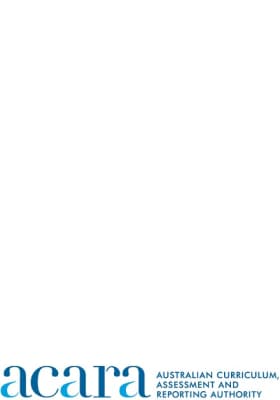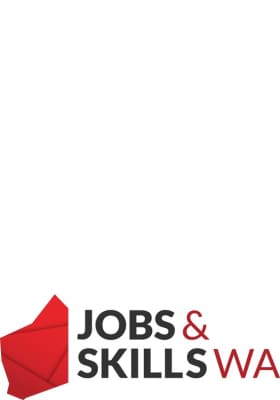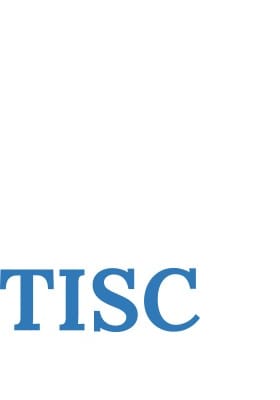Home education
Home education
Register as a home educator to be responsible for delivery of education to your child.
The Department of Education acknowledges that families choose home education for a variety of reasons, and the School Education Act 1999 (WA) recognises it as a valid option for educating children during their compulsory years of schooling.
To home educate your child, the parent or legal guardian taking primary responsibility must register with the Department of Education as the home educator. As a registered home educator, you are responsible for your child’s education program from the date specified on your registration certificate. You do not need to submit the education program at the time of registration. It will be reviewed during your initial evaluation meeting.
Your education program will be reviewed against the Western Australian Curriculum and Assessment Outline developed by the School Curriculum and Standards Authority (SCSA) and how it has been tailored to meet your child’s individual learning needs.
If you are uncertain about taking on the responsibilities of home education but are dissatisfied with your current school, you can explore options by contacting your local education regional office.
- Eligibility
- What your child can and cannot access
- Home educator responsibilities
- Develop an education program
- Evaluation meetings
- Cancellation of registration
- Register for home education
To register, you must:
- live in Western Australia with a current WA residential address
- be the child’s natural or adoptive parent, or legal guardian
- be a permanent Australian resident, New Zealand citizen, or hold a valid visa.
The Department of Education is responsible for registering home educators and evaluating the educational programs and progress.
The Department of Education does not provide:
- workbooks
- curriculum materials
- direct support in developing your program.
By choosing home education, your child will not have access to:
- Year 10 completion certificates
- Western Australian Certificate of Education (WACE)
- Australian Tertiary Admission Rank (ATAR) pathway for university entry
- department-developed workbooks or educational plans
- work experience insurance
- education email addresses (for example, for Microsoft Office or Canva discounts)
- in-school or interschool sporting and athletics competitions
- school-based support services (for example, psychologists, education assistants, therapy, school nurses)
- school-organised excursions or incursions, and associated discounts.
Home-educated students can choose to participate in the following education programs:
- National Assessment Program Literacy and Numeracy (NAPLAN) – Assesses student achievement in literacy and numeracy. All students in Years 3, 5, 7 and 9 in schools across Australia do the same tests on the same days during May.
- Online Numeracy and Literacy Assessment (OLNA) – An online literacy and numeracy assessment designed to enable students to successfully meet the Western Australian Certificate of Education requirements.
- Work experience – Secondary students can have work experience while studying at home. Insurance for home-educated children is not covered by the Department. You will need to make arrangements, such as inspection of work sites to ensure suitability for work experience and insurance.
- Community service – Community service hours accumulated by students over Years 10, 11 and 12 can be reported to the School Curriculum and Standards Authority. The hours reported are recorded on the student's Western Australian Statement of Student Achievement (WASSA).
- Vocational Education and Training (VET) courses – Your child may wish to complete a VET-accredited course while continuing their home education program. As a home educator you remain responsible for their full program and evaluation.
- Interm swimming program – Primary school-aged children are entitled to access interm swimming classes.
If eligible, home educators can apply for the Secondary Assistance Scheme payment. You must apply for this payment at the beginning of each year in Term 1.
To maintain your registration as a home educator:
- contact your home education moderator to schedule the initial evaluation within 3 months of registration
- schedule your annual evaluation at least 21 days before it is due
- participate in evaluations at your child’s usual place of learning, or another place agreed upon by you and the home education moderator
- provide evidence of your child’s learning and progress from the past year
- provide details of an intended education program
- avoid rescheduling evaluations more than twice without valid evidence
- notify your education regional office of any changes to your contact details
- participate in re-evaluation meetings if concerns are identified.
If these requirements are not met, your registration may be cancelled.
If possible, we would appreciate your child joining part of the evaluation meeting. This helps us gain a better understanding of their abilities and needs and provides a more holistic view of their home education.
Education programs should be flexible to meet individual needs and abilities, including mental health considerations. Education programs can be presented in different formats according to the home educator's preferred learning style, such as project-based learning, goal-based learning, inquiry-based learning or other approaches.
The education program does not need to document every detail of what your child will learn, or timetable when a particular subject will be covered. Your child's learning is not limited to school hours, term dates or written materials.
While making sure your education program suits your child’s individual needs, you should consider the Western Australian Curriculum and Assessment Outline developed by the School Curriculum and Standards Authority (SCSA). If appropriate, you can also include the ABLEWA curriculum.
Resources are available for Pre-primary to Year 12 on the School Curriculum and Standards Authority (SCSA) website. Home educators can provide proof of registration to request a login to the SCSA website.
You may also include materials from other sources.
Home educators must schedule an initial evaluation within the first 3 months of registration. Home educators are also required to schedule evaluations annually within 12 months of the annual registration date.
Following registration, home educators will receive an email with their allocated home education moderator’s details, including their contact information. It is the home educator’s responsibility to call or email their moderator to schedule the evaluation meetings outlined above.
At the evaluation meeting, your home education moderator will review your educational program and your child’s individual progress to ensure compliance with legislation. Moderators will not provide curriculum support or recommend specific resources.
As part of evaluation meetings, the home education moderator will complete an evaluation report, which will outline whether the education program and progress are deemed suitable. A copy of this report will be provided to you following the evaluation meeting.
If the home education moderator finds the program or progress inadequate, the evaluation report will outline the issues, explain the reasons, and include recommended actions to address them. A re-evaluation meeting will be required and the home educator will receive a notice of concern.
Initial evaluation meeting within 3 months of registration
Progress will not be assessed during the initial evaluation meeting, as a benchmark has not yet been established. The education program for the upcoming year will be reviewed, including your educational goals for your child.
Annual evaluation meetings
During annual evaluation meetings, home educators will share their child’s current capabilities, progress since the previous evaluation and your intended education program for the coming year. The home educator will also have the opportunity to discuss learning activities completed and any challenges encountered. Evidence of the child’s progress will be required.
The moderator will use this information to determine whether the child has made progress, considering their individual circumstances. The Western Australian Curriculum and Assessment Outline, or the ABLEWA curriculum (if applicable), developed by the School Curriculum and Standards Authority (SCSA), may be used as a reference when considering progress.
Re-evaluation meetings
The purpose of the re-evaluation meeting is to give the home educator a chance to address any identified concerns. The home educator must be given at least 7 days notice of a re-evaluation meeting. If the issues have not been adequately addressed, the home educator's registration may be cancelled. If this is the case, the home educator will be notified and sent a notice of cancellation.
If you receive a notice of cancellation, you may apply in writing within 14 days to the Minister for Education for a review of the Director General’s decision to cancel your registration. Please note: any applications made outside of this time frame cannot be considered in accordance with the Act.
Your home education registration may be cancelled if:
- the educational progress is deemed unsatisfactory
- you have not arranged an evaluation meeting
- you have not agreed to an evaluation
- a home education moderator has been hindered or obstructed in an evaluation required
- you do not notify the regional office of a change in details provided in the application, such as a change in address or contact details.
If you receive a notice of cancellation, you may apply in writing within 14 days to the Minister for Education for a review of the Director General’s decision to cancel your registration.
Further details about this process are in the Home Education Procedures (Appendix B).
Registration needs to be done within the following timeframes:
- For a child who is currently enrolled in a Western Australian school, within 14 days of leaving the school.
- For a child being registered for home education for the beginning of a new school year, by the last Friday in February.
Contact your local education regional office. The office will provide you with a form which you can complete and lodge.
To register for home education, you will need to provide:
- a valid email address
- an active phone number
- a copy of your child or children’s birth certificate or extract
- the name of the home educator and each child to be home educated
- your usual place of residence within Western Australia
- proof of guardianship if not the child's natural parent
- any court orders or visas, if applicable.
Once your registration has been processed and all required information confirmed, you will receive a certificate of registration and be assigned a home education moderator.
Contact
For more information about home education, contact your local education regional office.
Home schooling resources
Resources
There are many sites available that provide information on teaching and learning resources, networking groups, tertiary courses and career pathways. We encourage you to use the resources below to search for information and resources.
资产发布器
资产发布器
-
-

K-10 Outline
The Outline is the source of Kindergarten to Year 10 curriculum for all Western Australian students. It provides comprehensive information that educators can use to plan learning programs, assess student progress and for reporting purposes.
-

ABLEWA – Abilities Based Learning Education, Western Australia
Support for the teaching and learning of students with disability and additional needs who are unable to access the P-10 curriculum.
-

Australian Curriculum, Assessment and Reporting Authority
The authoritative source of advice on, and delivery of, national curriculum, assessment and reporting.
-

Jobs and Careers
The Department of Training and Workforce Development provide resources for planning careers and pathways for after your child’s compulsory schooling.
-

School Curriculum and Standards Authority Extranet
This site provides materials and resources to support educators. Registered home educators can gain access by emailing extranethelp@scsa.wa.edu.au.
-

Tertiary Institutions Service Centre (TISC), Western Australia
Course options, eligibility and the application process to apply for university admission.
Assistance for primary and secondary students
Assistance for primary and secondary students
-

Secondary Assistance Scheme
The Secondary Assistance Scheme provides financial help for eligible secondary students to meet the costs of books and uniforms. Contact your education regional office to request an application form.
-

Medical and dental services
Home-educated students can access school medical and dental services provided by the Department of Health. Local public schools can provide the telephone number of the school nurse and the school dentist for appointments. You need to provide evidence of registration at the appointment.
-

Student SmartRider travel card
All primary and secondary students are eligible for a Student SmartRider to access student fares on public transport. You need to provide student information and proof of registration. There is a $5.00 fee for the card. To apply contact Transperth.
